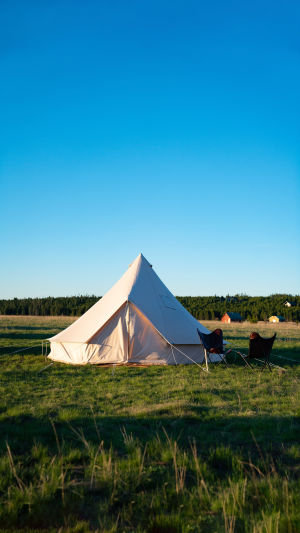Tents are shelters on the ground to shelter from rain, wind, and sunlight and for temporary housing.
It is mostly made of canvas and can be dismantled and transferred at any time, together with the support staff.
Tents are carried in parts and assembled only after arriving at the site, so various parts and tools are needed.
Knowing the name and usage of each part and being familiar with the structure of the tent will enable you to set up the tent quickly and easily.
Outdoor sports tents are divided into several categories: advertising tents, military tents, civilian tents, site tents, herringbone roof tents, tourist tents, disaster relief tents, inflatable tents, and children's play tents.
The way to open can be divided into fast-opening tents and hand-pitched tents.
Main body
1. Pillar: also known as the pillar, vertically erected on the ground.
2. Frame: Used in a slug-type tent or hut-type tent, combined with short bar-like material to form pillars or beams.
3. Building: The top part of the tent.
4. Roof: The part that forms the inclined surface of the tent.
5. Wall: The part of the wall on the side of the tent. Some tents do not have any.
6. Canopy: part of the roof, open to the front, supported by other pillars.
7. Door: for the entrance and exit of the tent. Can be set up on the other side of the window.
8. Ground mat: for the tent, the mat is laid on the ground. If the place is heavy moisture, you also need to lay another layer of the bamboo mat.
9. Flying mat: in the tent roof, and then laid another mat to shade from the strong sunlight.
That is the second layer of the roof.
10. Main rope: also known as pillar rope. Divided by the two ends of the pillar, the role of the pillar is to avoid tilting, and being fixed with pegs.
11. Corner rope: extended from the four corners of the tent curtain, and fixed with pegs.
12. Waist rope: extended from the bottom edge of the roof of the tent curtain, and fixed with nails.
13. Pegs: also called ground pegs, are used to insert into the ground to fix the ropes and the bottom edge of the tent curtain.
There are wooden. Metal and synthetic resin system.
14. Wooden hammer or iron hammer: the nail into the ground when used. Made of wood or metal to make a live buckle, attached to the main rope or corner rope parts.
Cable through the two small holes between them, move to control the cable.
15. Bag: the cloth curtain and pillars, nails, and wooden hammer put away the cloth bag.
Now, you have a certain understanding of the structure of the tent, the installation of the tent is more comfortable.





